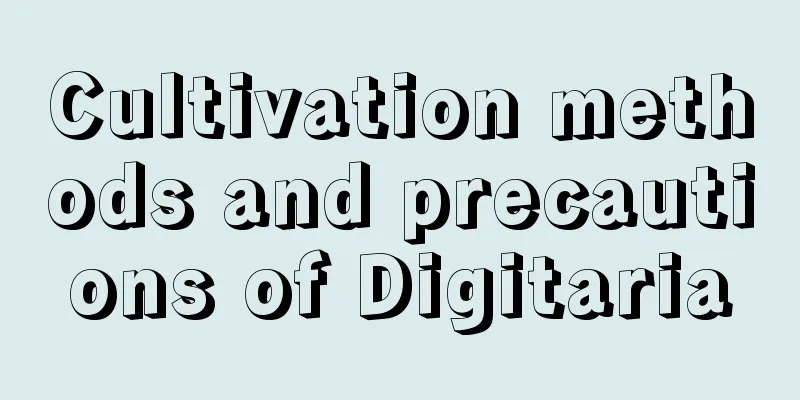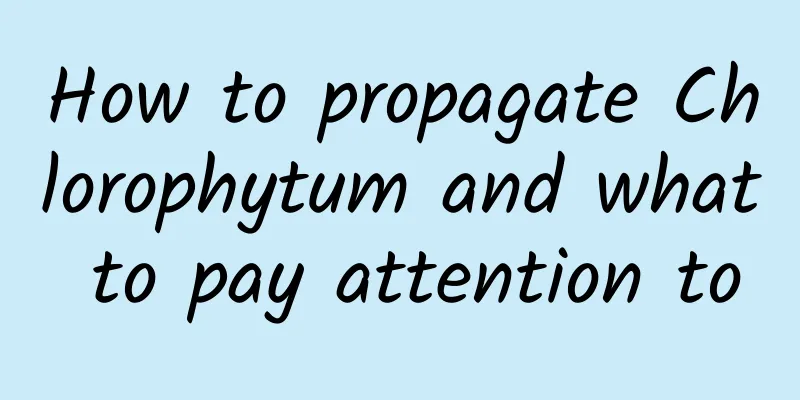Cultivation methods and precautions of Digitaria

How to cultivate Centella asiaticaLight and temperatureThe growth of the Chinese horse hoof needs sufficient light and more exposure to sunlight every day so that the Chinese horse hoof can grow lush and green. The Chinese horse hoof has a growth habit of liking light but being shade-tolerant. It can grow in semi-shaded and humid places and has low temperature requirements, but it will be frostbitten when the temperature drops to -6℃ to -7℃. Water and fertilizer managementDuring its growth, the Chinese horsetail requires regular irrigation and moderate fertilization. After the young plants of Dichondra divaricata emerge from the soil, they should be watered 1 to 2 times a week, and the irrigation frequency should be increased during the dry season. After the plant matures, watering should be controlled in early spring and early winter. During the peak growing season of the Spring Festival, the watering frequency should be determined according to the soil quality. Horse hoof likes nitrogen fertilizer. Usually, when it rains and waters, you should apply nitrogen fertilizer in moderation. After fertilizing, you should water the plant plenty of times to reduce the degree of leaf burns. Alternatively, fertilize first, then sweep the fertilizer under the leaves and combine with watering. At the same time, no fertilizer should be applied during the high temperatures in summer. soilThe soil requirements of the Chinese horsetail are not very strict. As long as the drainage conditions are moderate, it can be planted on sandy loam and clay. It mostly grows in fields or mountains with fertile soil. Precautions for breeding of horseshoe goldWeed removalWhen using Dianthus japonicus for lawn greening, weeds will appear because it takes some time to grow before it can be completely covered. If there are fewer weeds, they can be removed manually. If there are more weeds, they can be sprayed with herbicides. How to breed horseshoe goldThe common methods of propagation of Dichondra divaricata are sowing and division. Disease and insect pest control of Dichondra divaricataThe disease resistance of the Aquilegia serrata lawn is strong, with only white rot and a small amount of leaf spot mildew occurring. It will also cause rust, Sclerotinia disease. The main pests of the water chestnut lawn are the white grub larvae of the scarab beetle, the armyworm larvae of the noctuid armyworm and the larvae of the cutworm. There are other insect hazards such as snails, grassland borers, and pointed-headed grasshoppers. |
<<: Differences between Cornus officinalis and Evodia rutaecarpa
>>: Appreciation of flower arrangement of chrysanthemum, the hermit among flowers
Recommend
How to care for amaryllis flowers so they bloom every year
Amaryllis growing conditions The optimal growth t...
How many times a year can green beans be planted? Can they be planted all year round?
Green beans can be planted twice a year . The bes...
Taboos for the maintenance of Clivia in four seasons
Spring maintenance of Clivia - avoid wind In spri...
Lucky bamboo, half soil and half water, grew wildly
Lucky Bamboo Half Soil and Half Water Step 1 Cut ...
How to grow peacock grass
1. Breeding temperature Usually, it is difficult ...
How to keep the maidenhair fern more vigorous?
The maidenhair fern , with its unique elegant pos...
How to trim the cinnabar plum to look good
When is the best time to prune the cinnabar plum?...
What is the best season to plant bougainvillea?
Which month is suitable for planting bougainville...
Is it profitable to grow purple sweet potatoes? How much is the profit per acre?
Is it profitable to grow purple sweet potatoes? A...
What to do if the bear's paw grows too tall
Changes after elongation: The leggy growth of suc...
Cultivation methods and precautions of colorful wood (maintenance skills of colorful thousand-year-old wood)
The colorful millennium wood is small in size and...
When does hibiscus sprout and grow leaves
Hibiscus germination time Since the climate in th...
What vegetables are suitable for growing in sandy soil?
What vegetables are suitable for growing in sandy...
How to make the tiger skin plant grow golden edges, how to keep the golden edges when cutting
1. How to make the tiger skin plant grow golden e...
Cultivation methods and precautions for potted figs
Potted figs are easy to grow. They are a very sui...









